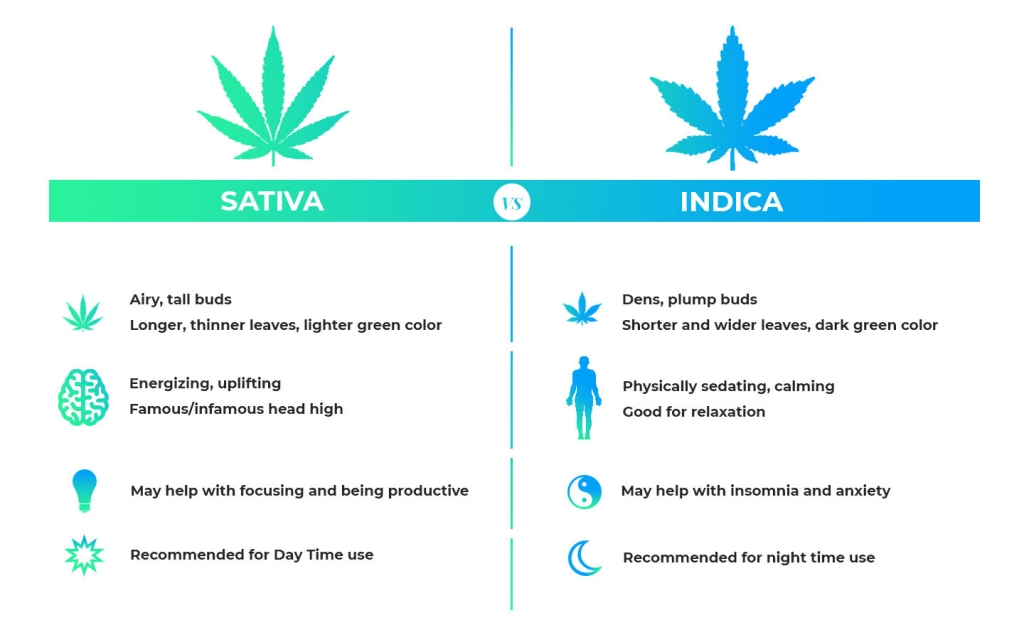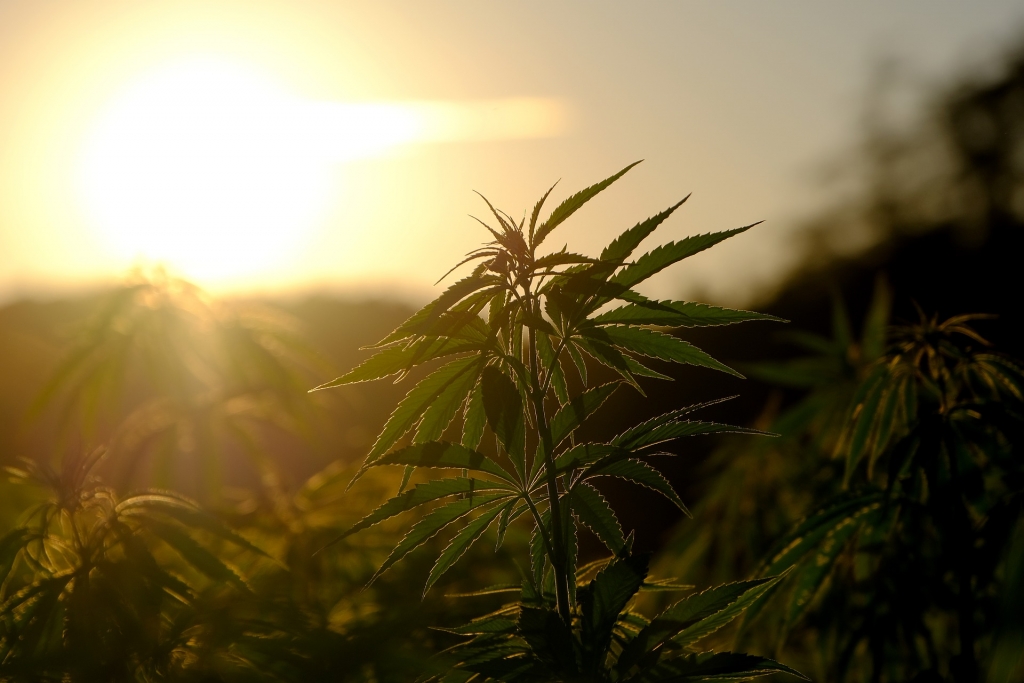There is this funny and sometimes frustrating thing about the Cannabis plant that just when you feel like you managed to put your finger on one topic, there is another one popping up, that leaves you even more confused about it. This can be a little overwhelming when you are trying to find the right strain for your need.
In this article, we are going to take a closer look at the main groups of strains, like Indica, Sativa, and hybrid. We will discuss the similarities, the differences, and if it is accurate at all to choose the right strains solely based on these categories.
There are many properties of the plant that we can use to categorize the different strains. The three main groups, that are well known and most used in the mainstream cannabis culture are Indica, Sativa, and hybrid. If you would walk into a dispensary and ask for help to find the best strain for you, your budtender would probably ask first which one do you prefer of these 3 categories. But let’s see if this is really the right way to go about it.
Indica vs. Sativa: Understanding the basics
When cannabis consumer society talks about Sativa and Indica they mostly differentiate them based on the plant’s physical appearance and their effect on the human body and mind.
Indica
- dens, plump buds
- shorter and wider leaves, dark green color
- physically sedating, calming
- good for relaxation
- may help with insomnia and anxiety
- recommended for night time use
Sativa
- airy, tall buds
- Longer, thinner leaves, lighter green color
- famous/infamous head high
- energizing, uplifting
- may help with focusing and being productive
- recommended for daytime use
Hybrid strains were born from the mix of Indica and Sativa plants and can carry the properties of both categories.

indica_vs_sativa
But here is the twist. However, everything that we mentioned above is true, it is not the whole picture. Not necessarily every Indica strain will make you stick to the couch and not every Sativa will help you conquer the world.
Today’s researches allow us to learn more about the cannabis plant and challenge what we have known before. Based on the latest studies it is safe to say that different strains affect the body rather based on the chemical profile (cannabinoids and terpenes) and not on whether they fall into the categories of Indica or Sativa. The effect of a certain strain will be based upon how the chemical compounds will interact with your unique body.
How the terms Indica and Sativa were born…
The terms of Indica and Sativa are actually rooted in botany. They were used to describe different species of the cannabis plant: Cannabis sativa and Cannabis Indica and were introduced in the 18th century.
Sativa is a Latin botanical adjective, that means cultivated and it is used to refer to low-THC strains that were grown for fiber and seeds in Europe and Western Eurasia thousands of years ago.
Indica is used to describe high-THC strains that can be found in India. It was cultivated and harvested for its seed, fiber, and pollen (hashish) as well as religious purposes.
These terms have shifted throughout centuries compared to their early botanical definitions
As we mentioned above, Sativa today describes the strains with longer thinner leaves that are believed to have an energizing and mind-altering effect on the body. – These used to be called Cannabis indica ssp. indica.
Indica today describes the plants with shorter, broader leaf, that delivers the body high. – these strains are used to be called Cannabis indica ssp. afghanica.
You probably wondering about the cultivation that we call today industrial hemp and we harvest it for fiber, seeds, and CBD. This non-intoxicating variety was originally named Cannabis Sativa. Although it is probably safe to let go of definitions like Indica and Sativa since we can see a big amount of cross-breeding over the centuries. Today technology allows us to “mix and match” strains with different properties to get the best result and yet not run into legality issues.

hemp
The new way to categorize and find the right strain
Now that we are slowly letting go of the terms of Indica and Sativa we will see that it is better to differentiate strains by their chemical profile.
We can find high-THC, high-CBD strains, or the perfect balance of these two. We need to consider terpene content as well since terpenes can play a significant part in the effect of the different cannabis plants. Three strains of Sativas or Indicas can very different cannabinoid or terpene profile that result in completely different effects.
You have probably heard it by now, but here is what to keep in mind about the different cannabinoids.
- THC-dominant strains: THC has mind-altering effects that some like and seeks and some just not into it. THC may cause the feeling of euphoria, relaxation, and can stimulate your appetite. It also improves a sense of well-being. It may work amazing for pain management so it could the right choice for you. Keep in mind that with high-THC strains you might run into some legality issue.
- CBD – dominant strains: CBD can have all the great benefits that we mentioned above without the mind-altering effect. It can induce a great sense of relaxation and it is not intoxicating. Hemp-derived CBD is legal in most parts of the world.
- Balanced THC/CBD strains: You can find nearly the same amount of THC and CBD in these strains. It can work well if you don’t know yet what you are exactly looking for. Also, CBD tends to ease the psychoactive effect of THC, so it can work well if you want just a slight cerebral high.
- Terpenes: If you ever heard about aromatherapy, or ever used some essential oil for relaxation, calming your mind, or boosting your mood, you can understand the importance of terpenes. Terpenes are aromatic compounds that give a unique scent to plants, flowers, fruits, and cannabis as well. However, more research is needed in this area, we already know, that the unique mixture of cannabinoids and terpenes can play a big part in the effect of different strains on the human body.
Primary terpenes and their effects on the body
Pinene: Earthy, piney scent with anti-inflammatory, antibacterial properties. Also promotes alertness.
Caryophyllene: It has a spicy, pepper-like, citrusy scent. It is a great anti-inflammatory and can help with pain sensation.
Humulene: It has a woody, herbal-like scent. Works great as an appetite suppressant.
Limonene: Orangey citrus scent, that eases acid reflux and helps with digestion. It can elevate mood and acts as a rich antioxidant. Treats anxiety and depression as well.
Linalool: It gives its great calming aroma of lavender. Works well as a sedative, helps with relaxation. It has anti-seizure, anti-fungal, and antibacterial properties.
Myrcene: Known for its pungent, earthy aroma. Depending on this terpene’s concentration, a strain can be energizing or sedative. (sedative: 0.5%<, energizing 0.5%>) It is also believed, that works as an antibiotic.
Terpinolene: Woody scent, works as an antioxidant, anti-cancer, and sedative.
Finding the best strain can be tricky and overwhelming at first since this is a personal experience. Everyone is different and can expect a different outcome. When you start looking, instead of asking simply for Indica or Sativa strains try to describe what is the result you are looking to get.
Whether you want to just chill, you need something to lift your mood, or you want some muscle relaxant or something to sleep better you will find the right one. The key is to be as specific as you can.

